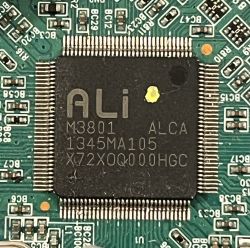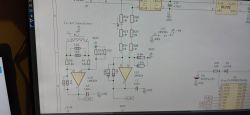
Welcome to those interested in the topic of building a simple analyzer - meter of 230V network parameters - one phase.
The meter is based on ESP32 module according to the schematic diagram, which is attached, and the whole circuit is not complicated.
To build the meter you will need the following parts:
1 - ESP32 DEVKIT V1 module with 4 MB memory, as shown in the attached image;
2 - current measurement sensor - current transformer for 100A range with 1V output or for 25A range with 1V output type SCT013, as shown in the attached image;
3 - sensor for voltage measurement - voltage transformer type TV16, as in the attached image;
4 - 5k precision potentiometer - 2 pieces, as in the attached image;
5 - power supply 230VAC / 5V 0.7A or charger with mini USB plug to power the ESP32 module, as in the diagram;
6 - universal mounting board;
7 - resistors and capacitors as in the diagram;
8 - wires and test leads as in the picture of the whole meter.
Important thing is when buying a
current transformer, please choose the type that has an output of 1V
I bought all the components on a well-known auction site, and the total cost did not exceed the amount of PLN 150.
Enclosed are two versions of the software to upload to the ESP32. The difference is that one is for a maximum range of 25A, and the other is for 100A, depending on which current transformer you buy.
The meter measures and displays the offset of sine waveforms of voltage and current relative to each other. It calculates COS fi, and if an inductive factor is detected, it calculates the capacitance of a capacitor to compensate for it.
Additionally, there is a choice of calculating the THD factor from voltage or current measurements, along with graphs showing harmonic levels - max 9.
Results and graphs are displayed on the screen of a phone, tablet or laptop.
Connect to the meter over Wi-Fi, and the meter has an IP address of 192.168.10.1 - image attached.
The software can be tested as soon as it is uploaded to the ESP32 module without the need to build the entire meter.
Inclosed are images of the following screens and the appearance of the meter.
I don't describe too much, because the design is simple, with which even a beginner in electronics can cope.
All the calculations are contained in the software, with which I was not easy, especially with the counting and measurement of harmonics - I wanted to make it clear and give accurate results.
The screens with the results are refreshed every 5 seconds, and the graphs are plotted using the vector graphics function - SVG.
After building the meter, calibration is done with precision potentiometers.
I calibrated using 2 kettles of 2000Watts each and a digital meter, which is sufficient to set the voltage and current range according to the readings on the meter.
After calibrating, you should mark yourself the voltage end that will be connected to the neutral wire and the other end that will be connected to the phase wire.
After attaching the current sensor to the phase wire, you should put it so that it is in front of the connected voltage wire on the phase.
Connect the meter to the 230VAC network in the sketch drawing, which is attached.
And when you are sure that the measurement of COS fi is correct, you need to mark yourself with a marker the direction of fastening the current sensor to the wire.
I determined this by turning off all loads electricity, and leaving the desktop computer and the meter should show capacitive power factor, if inductive then I will swap the direction of the sensor clasp.
For certainty, you can do some tests on other devices, such as a motor and should show inductive power factor, During calibration using kettles, the power factor should be near 1.
As a housing for the meter, I used a laptop power supply case.
In the meter it is possible to update the soft without removing the ESP32 module, you can upload new soft over WIFI using a browser from the address 192.168.10.1/new as the login window appears to us, then user admin password admin , and then select the correct bin file and wait for a message about successful upload of the software.
I was inspired to do the design and build the meter and write the program code by this article from a couple of years ago - link below:
https://majsterkowo.pl/rejestrator-napiecia-pradu-mocy/
Please give me any comments and suggestions for improvement or changes.
Greetings and I wish you satisfaction with the use of the analyzer - single phase 230 V network parameters meter.
Finally, I suggest calibrating the current measurement to use 75% of the range I for 25A used two electric czjniki 2000Watts each because the measurements will be more reliable.
I think that many colleagues will see what is happening in our home electrical networks, which will contribute to reducing expenses for electricity.
Update-software 28.10.2022
For both versions, a divider has been added - horizontal lines for THD graphs.
Increased number of decimal places for voltage and current.
Update-software 07.11.2022
Added configuration window to be able to connect to a home router and send data to the server.
Link below
https://www.elektroda.pl/rtvforum/topic3929533-30.html#20261095
Update-software 24.11.2022
Description and programs for uploading software to ESP32.
https://www.elektroda.pl/rtvforum/topic3929533-60.html#20300780
Update - soft 10.01.2024
Description and programs for uploading soft to ESP32.
https://www.elektroda.pl/rtvforum/topic3929533-90.html#20878394
Greetings
Futek2
Cool? Ranking DIY































